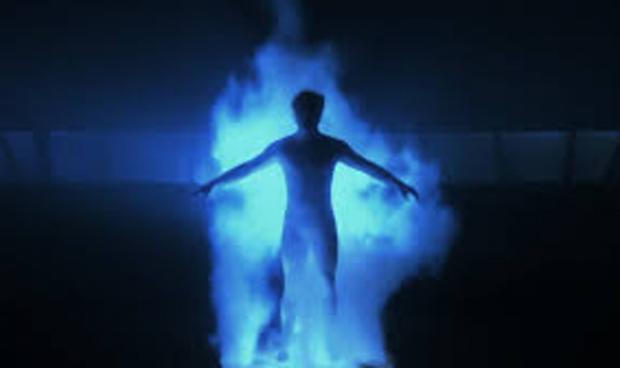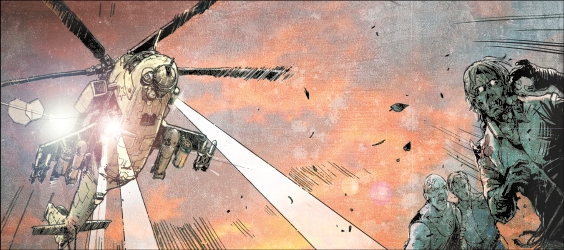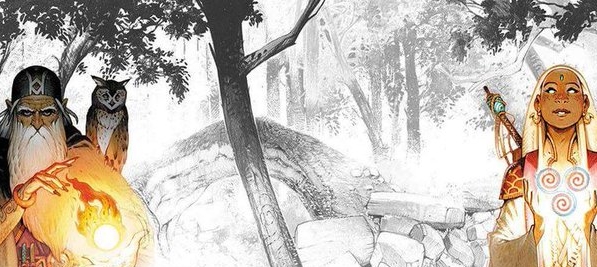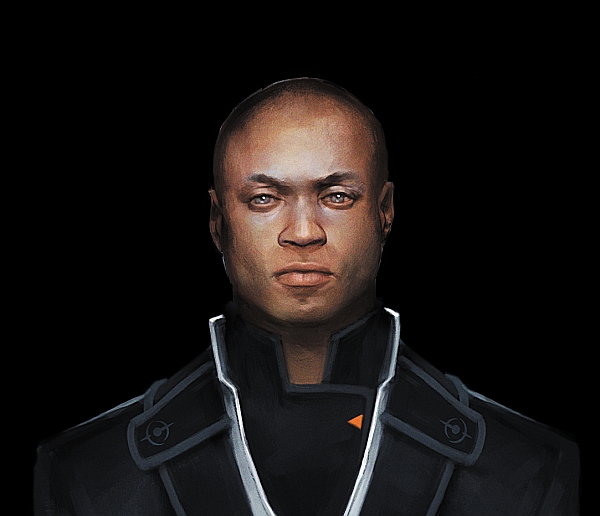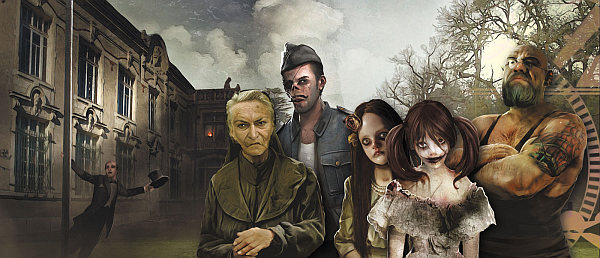T.I.M.E. Stories Designer Interview: Manuel Rozoy
The Cardboard Quest Team are all massive fans of T.I.M.E. Stories, hell it’s even my favourite gaming experience of 2015! So the natural course of action when you find something that you love and have access to the internet, is to find their owner and engage in a minor communication war of attrition until they agree to talk to you. Luckily we weren’t required to breach a ceasefire as Manuel Rozoy, Lead designer of T.I.M.E. Stories, saw our glowing review of his game and liked our Facebook page. One thing lead to another and he agreed to give us an exclusive interview about his game system, its origins and future as well as whether we’re allowed to play his games more than once.
Many board gamers have made the comparison between the late 80’s television show, Quantum Leap and T.I.M.E. Stories. What was your inspiration for creating this unique gaming system?
I’ve always been a time travel fan. Code Quantum (Quantum Leap in French), the Valerian & Laureline comic book, Back to the Future and 12 Monkeys are major influences, and Time Stories is a mix of all of these and more…To sum it up, take a little bit of A Groundhog Day, add a pinch of Guardians of Time and a dash of Poul Anderson. I really wanted to create something about time travel, but I also wanted to tell some kind of story and thus relive my old role playing game sessions back in the day. My first (and founding) idea was : a deck of cards = a scenario. Therefore, the mechanics of the game have two pillars: time travel and a story told by the way of cards.
Your career has seen you as Editor for a Board Game magazine in France and most recently as a video game designer for Ubisoft. How have these jobs influenced your design of T.I.M.E. Stories? Was Assassins Creed an influence on T.I.M.E. Stories?
The influence of video games on T.I.M.E. Stories is especially strong on the mechanics of the game, like the movement of players on the plan or the save system. When I started designing TIME Stories, in 2010, I was not working at Ubisoft. I had played Assassin’s Creed before, but the game had no influence my work (consciously, anyway!). As a side note, in a very recent test session of a scenario, I was using Quantum Leap as an example for the receptacles’ system. A younger player made a face and told me he had absolutely no idea of what I was talking about. After I explained the concept to him, he suddenly said, “I get it, it’s like Assassin’s Creed”. I had never made the connection before!
T.I.M.E. Stories separates itself from other narrative games by encouraging players to tell their team what they see in their own words. Was this simply for the story telling effect, or did the puzzle mechanic of the game play a role by creating a new way for players to remember things?
This mechanic is the heart of Time Stories, because we want people to TALK. I’m still interested in Role-playing games, and I’m aware of a recent trend called “narrativism”. The idea is to abolish the Game Master’s supremacy and let players act more on the story. This is intriguing, but I don’t like the fact that players can build the story without any help. This creates inequalities between players, as nothing is harder than improvisation whan you don’t like to do it. Time Stories wants each player to tell a story, based on something he/she reads (and therefore lives). The text helps by giving elements, ideas and words which may enhance the reconstruction of events. Another reason for this choice is the “room for interpretation” phenomenon. In many games of Time Stories, information is lost along the way. Players forget to transmit clues, forget what they’ve heard, etc. We balanced the game knowing this. This basic communication is the key for progress: while playing, you need to learn to listen to other people and improve your description skills.
Time Stories is a game about communication above everything else. We French call board games “Games of Society”, in the sense of gathering people to play and talk together. Last, but not least, the obligation to describe something only you have seen reduces drastically the quarterback effect you may have experienced in some co-op games. You’re the star of the show when you want to be.
The first few announced missions: Asylum, Marcy Case and Prophecy of Dragons are all based on popular themes of Horror and Fantasy. What is a particular era and setting you’d personally like to attempt and why? Is there any setting that you think wont work for the T.I.M.E. Stories system?
As of now, the epochs chosen are only decided by the whims of the scenarios’ authors. These time periods are quite easy to immerse yourself in and are familiar to most players. I don’t think a time period is incompatible with T.I.M.E. Stories. Even a prehistoric story (where you can have some problems with dialogues like “Grrrhhmmppff”, “Haargg” or “Attraaaaa”) can be envisioned, as agents are telepaths and can communicate freely without being impaired by “realistic” considerations and the inabilities of their receptacles.
Although many players and reviewers have been very positive about your gaming system there have been some criticisms; mostly in regards to replay value and the length of each scenario in relation to their cost. I’m sure these concerns came up during design and play testing that this was something that was not completely unexpected. What were your views and reasons behind producing a game this way?
Sacrosanct replayability… A boardgame can be played again or it’s not a real boardgame. Well, it’s a common definition since… forever. The only problem with “replayability” is you can’t have a structured and immersive narration, keeping players involved in the story (a word of caution here, I’m only referring to games where the story is written before, not games like Once upon a time… where people create their own story). The initial bias of T.I.M.E Stories is to ignore the replayability issue at the beginning of the creation process in order to focus on the narrative experience.
Hence the following interrogation; can a board game use the classic writing tools of movies, series, video games and literature to frame and deliver a fully developed story?
The players have the answer, but mine is a definite yes. Board gaming can be a wonderful way to do storytelling. Besides, keep in mind a mission is played over multiple sessions, each one offering new leads and points of view.
Fans of the game are likely to buy every scenario that you produce to experience the variety of world’s open to T.I.M.E. Stories players. Is there something special that these die hard fans will experience above casual players such as permanent narrative elements that would enhance their experience? Are there elements that gamers who haven’t played all the previous scenarios may miss?
Some permanent narrative elements exist, but Bob would be very angry at me if I told you more, so…
European, and French particularly, game designers appear to be a driving force in narrative board gaming with 7th Continent and T.I.M.E. Stories both being very exciting titles with strong story lines. Is there a trend in game design in Europe to break away from the traditional stereotypes of Euro game design?
I think the french gaming community has integrated the German influence (elegant and balanced mechanics) while being deeply influenced by the theme-heavy American games. T.I.M.E Stories and 7th Continent may both be a result of both these influences, but they still are exceptions in regard of the current Euro games.
Role Playing Game Systems have often used crowdsourcing to create scenarios and stories for players. With the development kit released by Space Cowboys encouraging gamers to write their own adventures with your system. What advice would you give to any wanna-be designers (I’m one of them) using the kit to create their own scenarios?
Most importantly, don’t lose time in designing a perfect prototype where scenes are perfectly in line with the situations depicted. Put your scenario structure on paper, as a flowchart, each location being a box. Write each scene (location), try to create surprises and choices in every location. Visuals can be scraped from Google Image even of they don’t correspond exactly to the overall atmosphere of your scenario so try not to get too fixated on the art. Assemble your prototype as soon as as you can and then… test it. A lot! With as many people as possible. A well-structured scenario naturally gives depth and tension to your story.
Although its very early in the lifespan of the T.I.M.E. Stories system, what were your initial goals when you developed this game? Have you already achieved what you wanted or what is the end goal for you and your team where you can say you’ve done all you’ve wanted to do with it?
I wish Time Stories will be enough of a success so that people will stop talking about the game system, but about the scenarios. I wish each potential scenario designer will twist the system enough to surprise players, I wish illustrators will always be able to put images on designers’ words to make new universes appear… just the way it works with comics and graphic stories.
Still, our greatest achievement as of today, made possible by the wonderful work of the Space Cowboys, is that Time Stories is finally out!
We’d like to give a massive thanks to Manuel Rozoy for taking the time out of his busy schedule to answer our questions. T.I.M.E. Stories has proven to be a commercial and critical success, with many renowned board game critics and accrediting bodies giving praise to Manuel and his team. We cant wait to hear of his next award, and to play (and even design) the next amazing scenario.
-
DieJason

